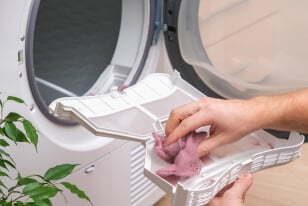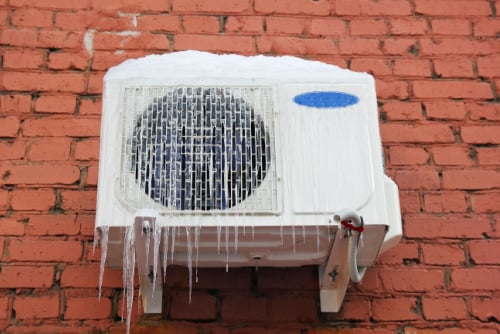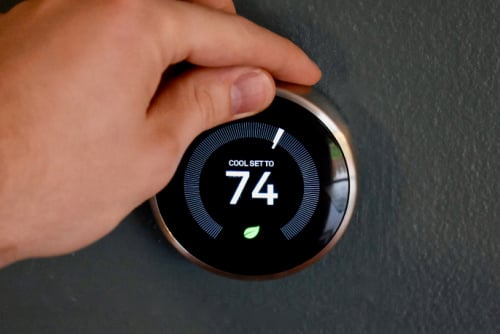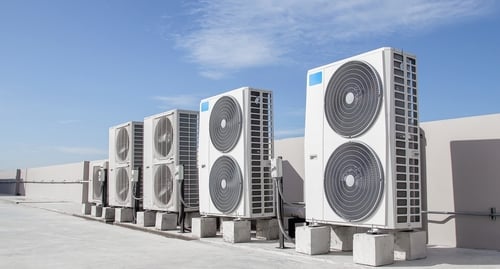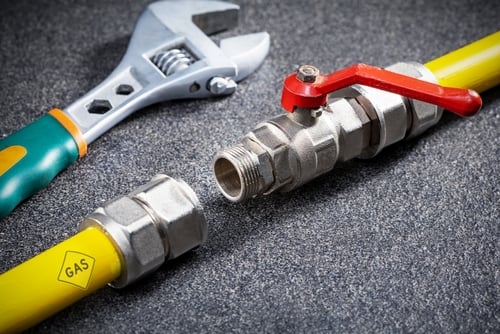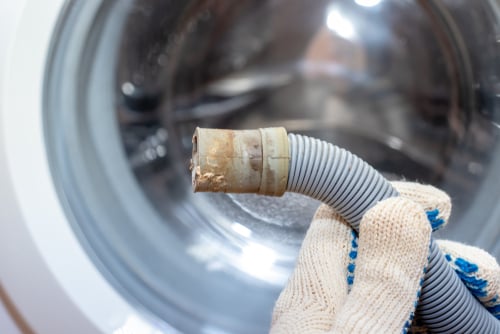Here’s a basket of typical laundry day issues you might be able to iron out on your own.
When your washer or your dryer breaks down, it can throw a wrench into you whole schedule. See how to deal with the most common problems.
If you’re like most families, your washer and dryer are working six or seven times a week. If either of those machines breaks down, your laundry can really pile up. So can the repair bills and the trips to the local laundromat. Next time your washer or dryer is on the fritz, troubleshoot these common issues before you book a service call.
Failure to launder.
If your washer or dryer won’t turn on, first make sure it’s plugged in and the breaker is on. Your dryer could have a blown internal thermal fuse, which is usually a pretty simple DIY fix on most machines. Also check the door latch—if it fails, the door won’t close properly and the dryer won’t kick on. If it still refuses to start, test the outlet with a voltmeter to make sure it’s still drawing power. If your washing machine won’t start, you’ll probably need to call a professional.
The washer won’t drain.
Chances are the drain hose is clogged. The good news is you can probably fix this yourself. Disconnect the hose, check for clogs, and snake out any foreign objects. You’d be surprised what can work its way into that hose and even the drain pump—small articles of clothing, toys, coins, keys, you get the idea. If there are no clogs or kinks in the drain hose, the drain pump is probably the culprit. If it’s jammed, it’ll need to be repaired or replaced.
Shake, rattle & stroll.
Thumping? Rattling? Moving around the room? Sounds like the machine isn’t on the level. Washers and dryers have adjustable legs so you can adjust them to stop the noise. The thumping could also be happening because clothes have gotten balled up and are slamming against the inside of the drum. Shake everything out before you toss it in. And check for small objects stuck in the drum. If you’re still hearing noises, your machine may be on its last legs.
Splish splash.
There are few reasons why your washing machine might leak, some of which you can handle on your own. For example, if the drain hose has cracked or split, you can probably replace it yourself. If it’s a front-loading model, check the seal around the door and clean away any residue.
The source of the leak may be the water inlet valve, which can fill with mineral deposits or succumb to rust. You should be able to change that pretty easily. To prevent water damage from future leaks, place by a drain pan under the machine.
Clammy jammies.
If your dryer isn’t drying, don’t string up a clothesline in the back yard. Check to see if the setting is right—not air-fluff or air-dry. Next, try replacing the internal thermal fuse. If the problem has gradually been getting worse, going from warm but still slightly damp clothes to clothes that are still sopping wet at the end of a cycle, the problem is the heating element. Luckily, you should easily be able to replace that, too. Just unplug the machine, remove the back panel, take out the old heating element and put in a new one. You may need to take the thermostat off the old heating element and install it on the new one.
No drum roll.
If your spin cycle has vanished, try putting fewer clothes in—especially if you’re used to stuffing in as much as you can. It’s tempting to fill the machine to the brim if you’re doing laundry for a big family, but an overloaded drum can’t spin like it’s supposed to. If it happens even with smaller load sizes, you might have a broken belt or a jammed drain pump.
At Frontdoor, we know you love getting things done around the house. Staying in control of your to-do list is easier when you can keep the small things from turning into bigger—and more expensive—ones. We’re here to make it easier to prevent problems instead of reacting to them. We help you gain the peace of mind that comes with staying on top of your home’s health.
Want to learn more about keeping your washer and dryer washing and drying, or anything else about home maintenance and repair? Download the app if you haven’t already, and chat with a helpful, friendly Frontdoor expert.
Frontdoor assumes no responsibility, and specifically disclaims all liability, for your use of any and all information contained herein.
Was this article helpful?
